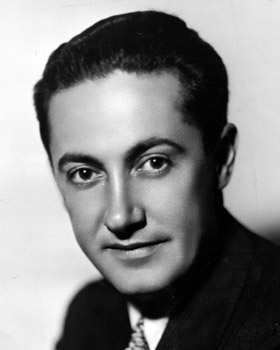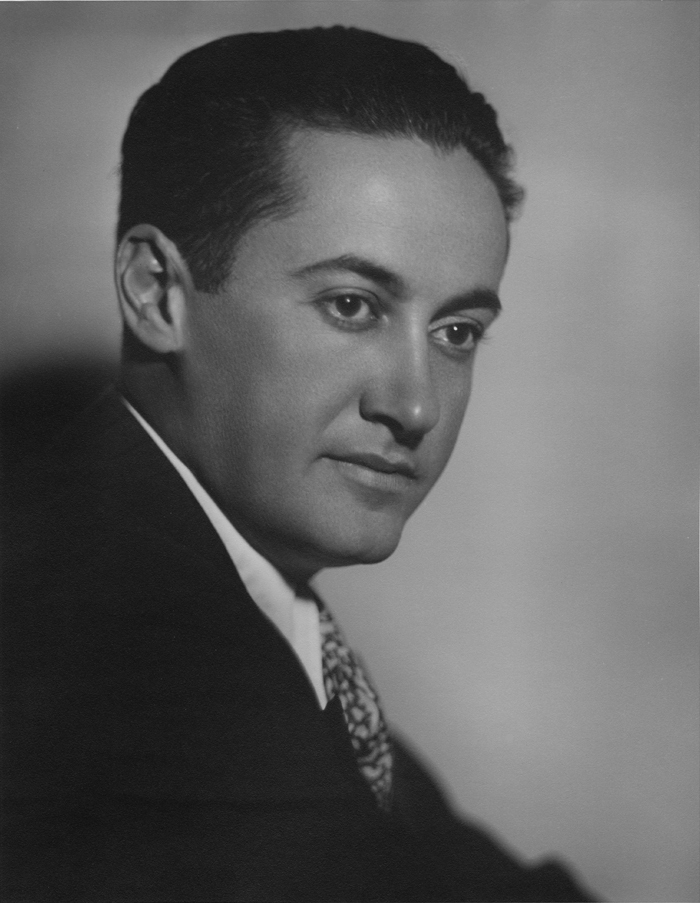Irving Thalberg (Irving Grant Thalberg)

Irving Grant Thalberg (May 30, 1899 – September 14, 1936) was an American film producer during the early years of motion pictures. He was called “The Boy Wonder” for his youth and his extraordinary ability to select the right scripts, choose the right actors, gather the best production staff and make hundreds of very profitable films, including Grand Hotel, China Seas, Camille, Mutiny on the Bounty and The Good Earth. His films carved out a major international market, “projecting a seductive image of American life brimming with vitality and rooted in democracy and personal freedom,” states biographer Roland Flamini. Irving Thalberg was born in Brooklyn, New York, and as a child was afflicted with a congenital heart disease that doctors said would kill him before he reached the age of thirty. After graduating from high school he took night classes in typing and worked as a store clerk during the day. He then took a job as a secretary at Universal Studios’ New York office, and was later made studio manager for their Los Angeles facility, where he oversaw production of a hundred films during his three years with the company. Among the films he produced was The Hunchback of Notre Dame.
Irving Thalberg then partnered with Louis B. Mayer’s studio and, after it merged with two other studios, helped create Metro-Goldwyn-Mayer (MGM). He was made head of production of MGM in 1925, at the age of twenty-six, and after three years MGM became the most successful studio in Hollywood as a result of his supervision. During his twelve years with MGM, until his early death at age 37, he produced four hundred films, most of which bore his imprint, and their production had adapted his innovations. Among those innovations were story conferences with writers, sneak previews to gain early feedback, and extensive re-shooting of scenes to improve the film. In addition, he introduced horror films to audiences and coauthored the “Production Code,” guidelines for morality followed by all studios. During the 1920s and 1930s, he synthesized and merged the world of stage drama and literary classics with Hollywood films. Irving Thalberg created numerous new stars and groomed their screen images. Among those whose stardom was guided by Thalberg were Lon Chaney, Ramon Novarro, John Gilbert, Joan Crawford, Clark Gable, Jean Harlow, Wallace Beery, Luise Rainer, Greta Garbo, Lionel Barrymore, and Norma Shearer, who became his wife. He had the ability to combine quality with commercial success, and was credited with bringing his artistic aspirations in line with the demands of audiences. After his death, Hollywood’s producers declared him to have been, despite his young age, “the foremost figure in motion-picture history” throughout the world. President Roosevelt wrote, “The world of art is poorer with the passing of Irving Thalberg. His high ideals, insight and imagination went into the production of his masterpieces.” The Irving G. Thalberg Memorial Award, given out periodically since 1937, has been awarded to producers whose body of work reflected consistently high quality films.
Born
- May, 30, 1899
- USA
- Brooklyn, New York
Died
- September, 14, 1936
- USA
- Santa Monica, California
Cause of Death
- pneumonia
Cemetery
- Forest Lawn Memorial Park (Glendale)
- Glendale, California
- USA



